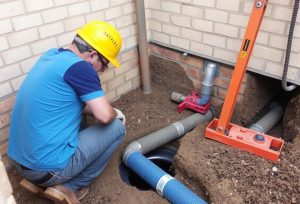
Computer-Aided Facility Management (CAFM) systems have rapidly become essential tools for managing facilities effectively. From optimising building operations to streamlining resource allocation, these solutions empower businesses to manage their environments with precision and efficiency. This blog will explore what CAFM systems are, their key features, and the benefits they offer, while casting a brief look at their role across industries and future developments.
What is a CAFM System?
A CAFM system is software designed to help organisations manage their building facilities, resources, and assets digitally. It combines data collection, analysis, and automation to support informed decision-making. By offering a centralised platform, CAFM systems provide reliable tools for tracking everything from space usage to equipment maintenance schedules.
Core Features and Functionalities
CAFM systems are equipped with a range of features meant to elevate facilities management. One foundational aspect is space management, through which managers gain insights into how spaces are used and can optimise layouts accordingly. Asset tracking is another integral capability, allowing companies to monitor the condition, upkeep, and lifecycle of equipment.
Preventive maintenance schedules, generated through the system, reduce the risk of equipment failure, while compliance tracking aids organisations in meeting regulatory requirements. Furthermore, some CAFM solutions support scheduling services such as cleaning, security checks, or room bookings, making day-to-day operations smoother.
Benefits of Implementing CAFM
Adopting a CAFM system can bring measurable advantages to organisations. Firstly, data centralisation ensures that all facility-related information is available in one accessible dashboard. This streamlines workflow and improves transparency across departments.
The use of automated processes significantly cuts down on administrative time, allowing facility managers to focus on higher-priority tasks. Additionally, timely maintenance insights help organisations avoid unexpected disruptions, ultimately saving money by extending asset lifespans and reducing energy waste.
For multi-site companies, managing multiple locations becomes more straightforward, as CAFM systems provide a unified overview and enable comprehensive decision-making.
Integration with Other Business Systems
The real strength of CAFM solutions lies in their capacity to integrate with existing business tools, ensuring seamless collaboration across multiple workflows. Hooking into enterprise resource planning (ERP) software can provide financial reporting that reflects accurate maintenance and operational costs. Similarly, linking with HR management systems can assist in room or workstation allocations for employees.
CAFM systems often work well with Building Management Systems (BMS), enabling energy tracking and optimising consumption patterns. This connectivity turns the facility into a smarter, more efficient space.
Applications Across Industries
CAFM’s versatility makes it applicable to a wide range of sectors. Large educational institutions use these platforms to manage sprawling campuses, monitor classroom usage, and handle demand fluctuations. Healthcare institutions rely on precise maintenance schedules to ensure medical equipment remains operational without interruption.
Retailers, too, leverage CAFM systems to manage inventory spaces and store layouts effectively. Additionally, corporate offices streamline operations by scheduling shared spaces, ensuring workplace efficiency. The scalability of CAFM solutions tailors them to the unique demands of each field.
Future Trends for CAFM
Emerging technologies are driving the evolution of CAFM systems. The integration of Artificial Intelligence (AI) is making predictive maintenance more accurate, helping managers anticipate potential equipment failures before issues arise. Internet of Things (IoT) sensors are also contributing by gathering real-time data on energy usage, air quality, and occupancy levels.
Mobile connectivity is increasing accessibility, allowing facilities teams to manage operations through smartphone apps regardless of their location. Cloud-based systems are further enhancing collaboration and reducing infrastructure costs, ensuring that even smaller businesses can adopt CAFM solutions efficiently.
Closing Thoughts
CAFM systems have redefined facilities management by offering data-driven strategies and centralised solutions. They streamline operations, provide actionable insights, and foster efficiency in ways that traditional methods fail to match. As technology continues to advance, CAFM systems are poised to become even more valuable assets for organisations looking to optimise their environments intelligently.
By evaluating and implementing a CAFM system suited to specific organisational needs, businesses stand to reap significant long-term benefits through improved resource management and operational reliability.






